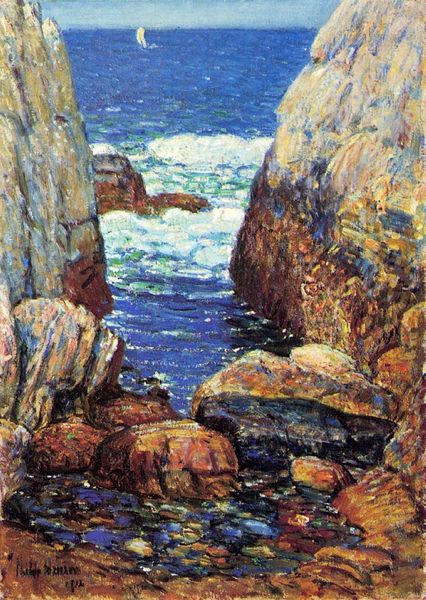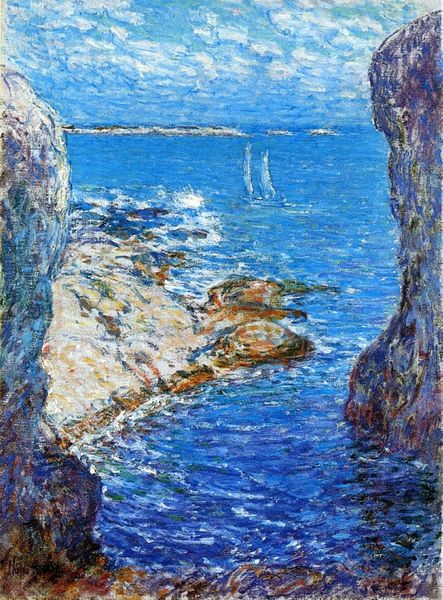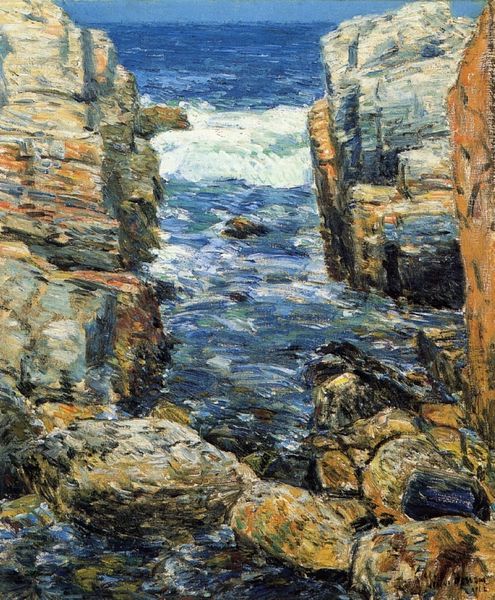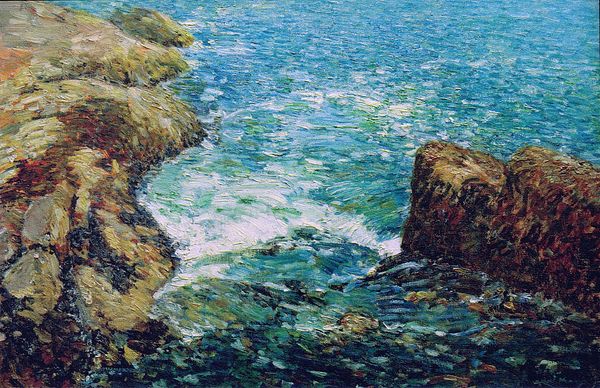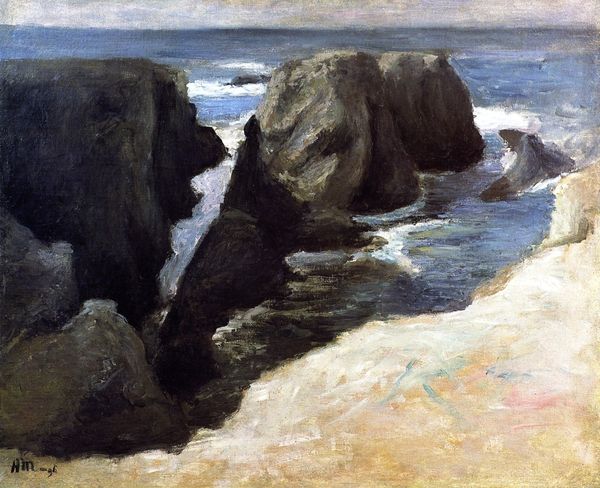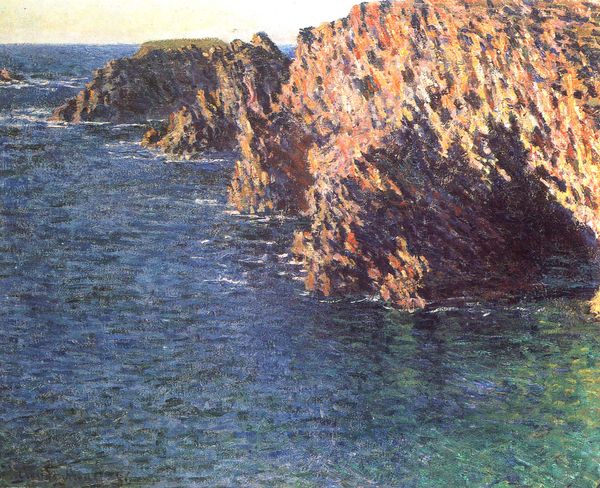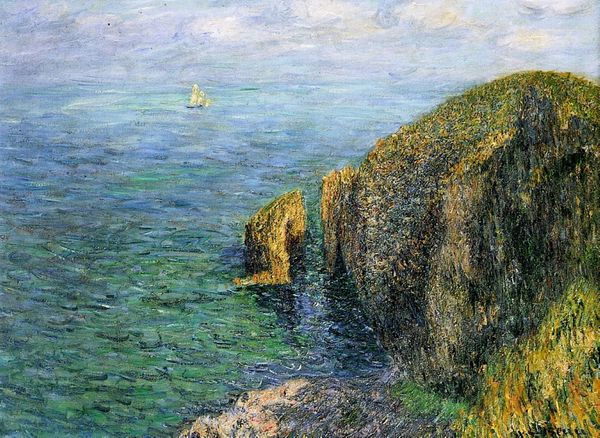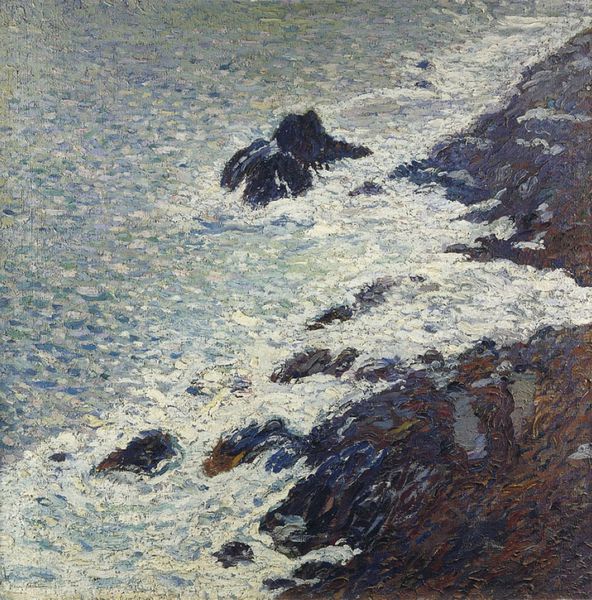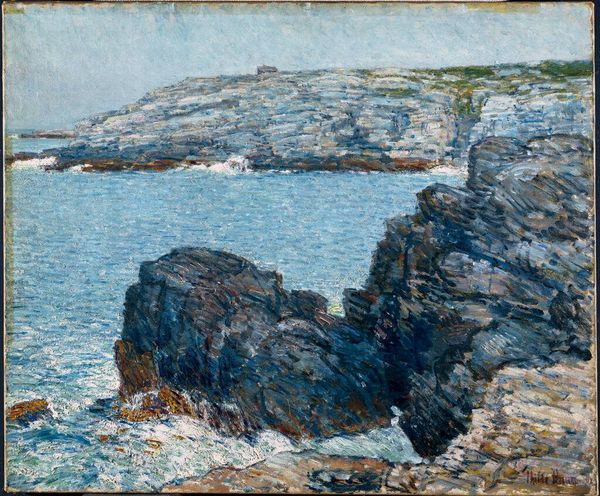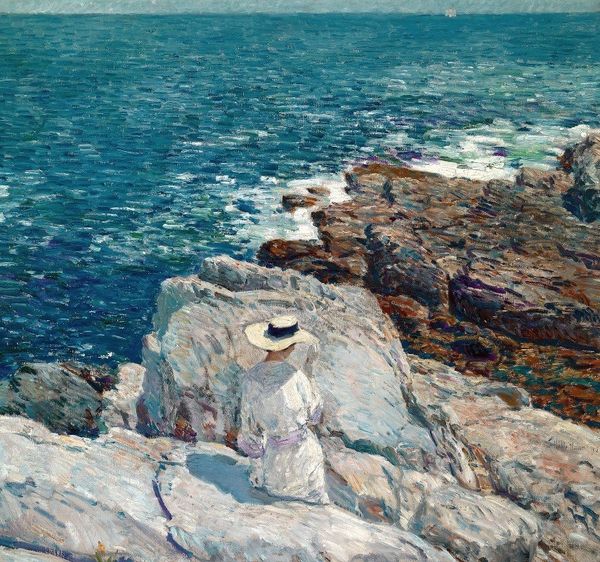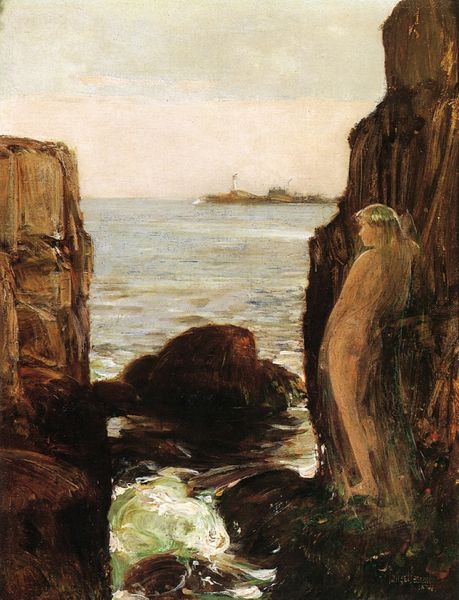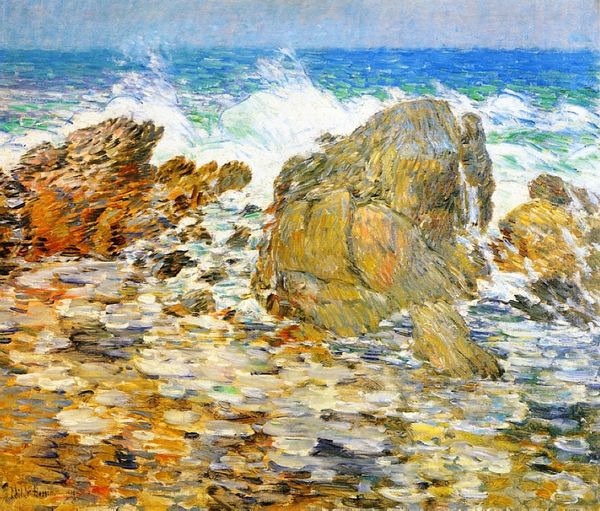
Copyright: Public domain
Editor: So, here we have Childe Hassam's "The North Gorge, Appledore, Isles of Shoals," painted in 1912. It's an oil painting, and it feels incredibly raw and immediate, almost like I’m standing right there in the gorge, feeling the spray. What stands out to you? Curator: What strikes me is Hassam's strategic presentation of nature. "Plein-air" painting, yes, but how does he then exhibit it? The Isles of Shoals were becoming a summer destination for the burgeoning middle class seeking a curated experience of nature. Editor: Curated? In what way? Curator: Well, think about it. The Impressionists weren't just capturing light; they were selling a vision of leisure and escape. Hassam chooses this rugged scene, but the brushstrokes are softened, almost inviting. The viewer gets the thrill of nature without the real discomfort. Consider how these images circulated in galleries, magazines—shaping perceptions of the American landscape. Editor: So, it’s not just about the pretty picture but about the entire industry and culture surrounding its creation and consumption? Curator: Precisely. It's about how art reinforces or challenges certain ideas about nature, leisure, and even national identity. The late 19th and early 20th centuries saw a real push to define "American" art, often tied to these very landscapes. This is a marketed, aestheticized version of the landscape as much as a true record of it. Editor: That gives me a whole new perspective on Hassam and the Impressionists. I guess I was just seeing the pretty colors. Curator: Well, color sells, but history tells! Examining the market forces and social context deepens the artistic experience. Editor: Definitely food for thought! I will carry it in mind while studying American art and culture from now on. Thank you.
Comments
No comments
Be the first to comment and join the conversation on the ultimate creative platform.
